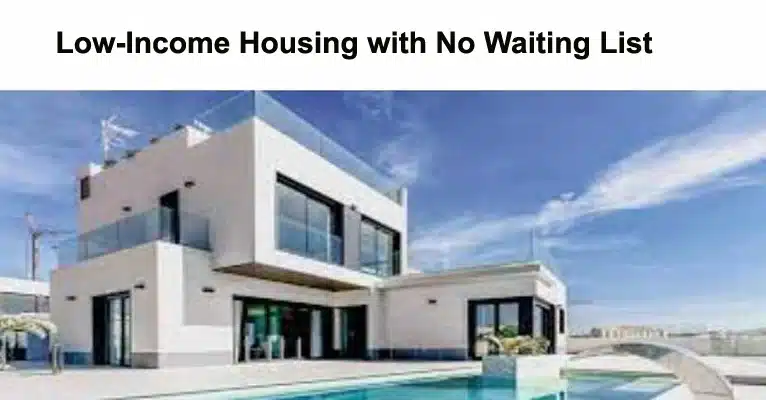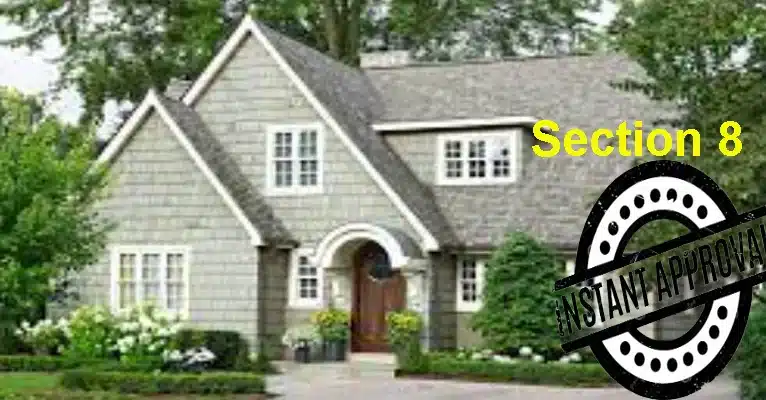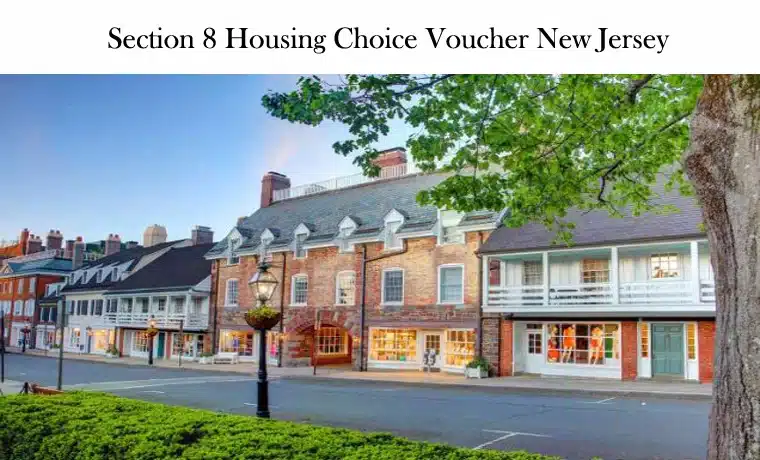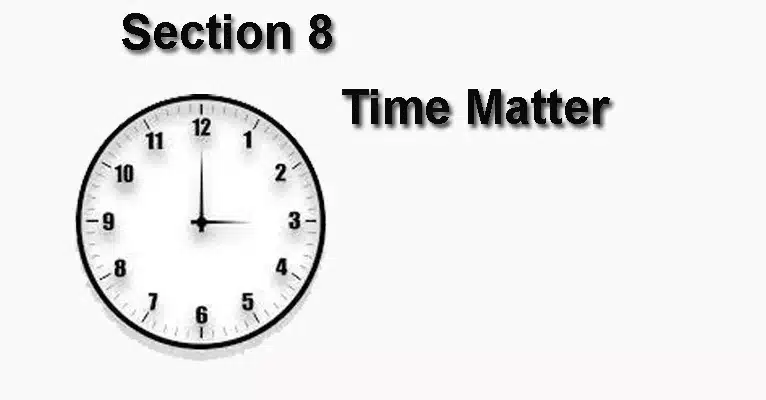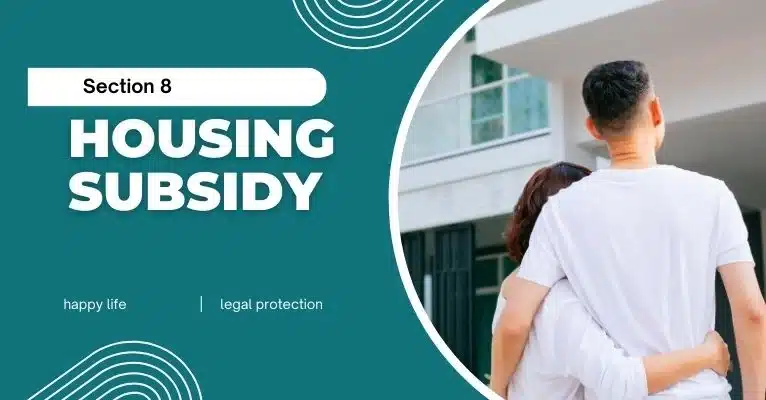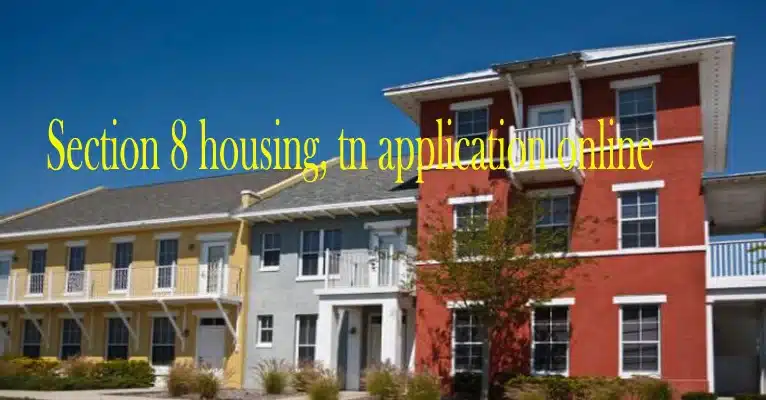Low-Income Housing with No Waiting List
Affordable housing sounds easy on paper, but when it comes to reality, there is another story full of patience and challenges, especially for underemployed and unemployed individuals. Some communities offer low-income Housing with no waiting list as an aid for rent payments or mortgages. However, finding the best no-waitlist apartments is a hassle, especially when you need to know the right way to look for them. Let’s get you sorted by bringing you a complete guide.
What Is Low-Income Housing?
It refers to affordable public, subsidized, and private housing options that cater to individuals with a limited budget. In the U.S., low-income Housing is a terminology typically used for federally funded programs, i.e., affordable public housing owned and administered by the government.
Even though private landlords own the properties rented via Section 8 Housing vouchers, the government pays direct subsidies to landlords to make housing rents affordable for tenants. Similarly, non-profit organizations offer these housing options by often using government funds. Non-profit companies operate housing developments way below the usual market rates to assist poor families in finding affordable housing for their loved ones.
List of Low-Income Housing with No Waiting List

1. Housing Choice Vouchers Program
The Section 8 Housing Program is a federally administered program designed to offer affordable, safe, and secure housing for renters with limited budgets and incomes. The eligible candidates pay 30% of their monthly income towards rent payments while the difference is directly transferred to the landlord’s account from the government-allocated subsidies.
You must earn income equivalent to 50% of the area and be a U.S. citizen aged 18 or above to be eligible for the voucher. You can increase your chances of inclusion despite a long waiting list by being specific about your condition and emergency via an application, i.e., homelessness, domestic abuse victim, critically ill, family with children, disabilities, senior citizen, etc.
2. Public Housing Programs
PHA manages and funds the Public Housing Programs to help the people in need, i.e., senior citizens, people with disabilities, vulnerable households, etc. The people who fulfill the eligibility criteria and qualify for the voucher pay 30-35% of their monthly income as rent.
The housing authorities shortlist individuals based on the vulnerability criteria, i.e., people living in extreme measures are always preferred over others, including homeless, disabled, severely ill, or aged citizens. You can even apply as a single applicant for one-bedroom spaces.
3. Section 811 Housing for People with Disabilities
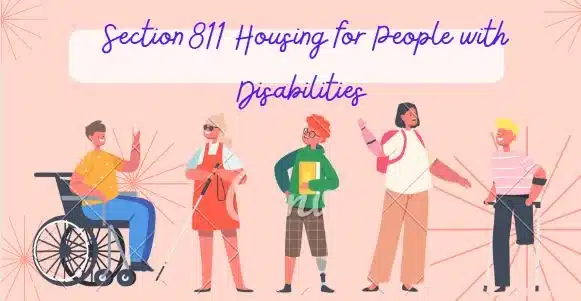
If you have limited abilities, you can avail of subsidized housing by paying only 10 % of your gross income or 30 % of your net. Disabled people are granted Section 811 Housing based on revenue, living status, and the quoted disability. You might have to put up with a waiting list as the vouchers depend on the availability in the region; hence, it is essential to be sure of their availability before applying to save yourself from the hassle.
4. Single Parents Transitioning from Homelessness
Suppose you are a homeless single parent with children or at the risk of going homeless after a temporary stay with your family. In that case, you can apply under the lost category, as shelters can give you short-term covers, but they are short-term solutions. In addition, if you live in substandard housing infested with mice in unsafe conditions, you must go for no waitlist income apartments under the section. Explaining your living conditions will allow you to place ahead on the housing without a waiting list.
5. Supportive Housing for Elderly Section 202
Supportive Housing for Elderly Section 202 was created to ease senior or older adults surviving on little or no income. The federal government gives loans and funds to non-profit organizations and private management companies who, in turn, build Low-income Senior Housing With No Waiting List and minimal rent payment requirements, i.e., 30% of the net income. However, you must fulfill the program’s criteria, i.e., you must be at least 62 years old with a 50 % median income within the respective region to qualify for the assistance.
6. Rural Development Apartments Under Section 515
Just like Section 202, Section 515 caters to different strata of individuals, i.e., the government gives loans to non-profit organizations, which in turn build houses for individuals based in rural areas at rent rates below the market rate. The best part about Section 515 is that the applicants can put up with short waiting lists and are asked to pay minimum rent payments.
7. State and Local Housing Programs
State and Local Housing Programs provide housing solutions for individuals who fall into a particular category, i.e., older people, poor families, and persons with disabilities. You can contact the local housing organization to gather information about such a program. These programs often have no waiting list and a relatively more straightforward application process.
8. Housing Tax Credit
Suppose you are looking for affordable housing for families with one or two members. In that case, federally government-funded housing programs might be the right fit for you, especially if you are looking for nearby. You don’t have to qualify for the program as a U.S. citizen.
Who Qualifies to Apply?
It is the job of the local Housing Authorities to ensure that all applicants meet the eligibility criteria set by HUD, i.e., annual gross income, elderly individual eligibility, eligibility based on disability or family, eligible immigration status, and U.S. citizenship.
Advantages
- often has no waiting list, saving you time and energy.
- It is usually more affordable than available traditional housing options.
- Often based in more convenient locations.
- They come with its own set of amenities and features.
- It can help improve residents’ overall quality of life, owing to the safety, security, and affordability standards.
- It can instill a sense of community and belonging.
Disadvantages
- One of the significant setbacks of the Low Income Apartment No Waiting List is the unavailability of units due to high demand and limited units. The result is that you are put on a waiting list that could cost you your sanity.
- Moreover, it may offer a more comfortable living than you seek.
- Finally, It tends to be based in unsafe areas with a high crime rate, making living insecure.
Tips for Living In Low-Income Housing
Low-income housing comprises public housing units operated and owned by government agencies and offers living assistance to people fulfilling the criteria set forth by the government. It must be noted that living in public housing is a hassle in itself, but it does offer a sense of belonging.
- Being patient towards your neighbors could go a long way in making your life peaceful in the Housing.
- Acceptance is the key to adjusting to new surroundings, mainly if you are not used to underwhelming accommodations.
- Reciprocation helps you on your journey, so utilize what is in your hand and share your living space with patience.
Lastly, looking at the better aspects of life will help you to stay positive while living in the housing.
Summing It Up
Affordable Low-Income Housing without waiting lists is designed to cater to individuals and families facing financial difficulties. Programs like Housing Choice Voucher Assistance and Section 811 allow people with disabilities to have secure homes without putting up with long waiting lists, and that too at affordable costs.
It offers apartments at convenient locations within affordable ranges. However, it has its own set of drawbacks to offers, i.e., limited resources and substandard living conditions, to quote a few. So be patient towards other people, and make the most of the available resources to develop community ties that will make living in shared places relatively more straightforward. After all, you can strive to build a better future while living in housing that provides much-needed stability.

